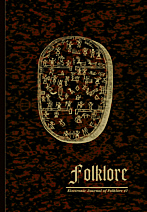Name Signs for Hearing People
Name Signs for Hearing People
Author(s): Liina PaalesSubject(s): Anthropology
Published by: Eesti Kirjandusmuuseum
Keywords: American Sign Language; Chinese Sign Language; culture contacts; Deaf cultures; Estonian Deaf community; Estonian Sign Language; Finnish Sign Language; French Sign Language; German Sign Language; hearing people; New Zealand Sign Language; nicknames; perso
Summary/Abstract: The article will discuss personal name signs given by members of the Deaf community to hearing people. The main categories of Estonian personal name signs’ formation will be introduced. There are four categories of personal name signs in Estonian Sign Language: 1) arbitrary (initialised) name signs; 2) descriptive name signs; 3) initialised-descriptive name signs or 4) loan/borrowed name signs. The nature of personal name signs has been considered in the context of onomastics and folkloristics. Here the issue is about defining personal name signs as nicknames or as official names. In the context of sign language intercourse personal name signs have an official status and are applied in formal situations in Deaf communities. In the present article, name signs of Deaf-related and Deaf community nonrelated public figures of the dominant hearing culture have been explored. Three key sources have been exploited for this research: 1) publications (international personal name signs studies; printed and electronic media); 2) oral (signed) and written information from Deaf people, sign language interpreters and name signs researchers; 3) manuscripts. A large number of name signs of hearing people have been collected by the author from different sign languages – Estonian Sign Language, Russian Sign Language, Finnish Sign Language and German Sign Language, etc. A set of personal name signs of Deaf school teachers, sign language interpreters, sign language researchers, politicians, athletes, and other public figures has been represented, and several name signs of religious figures. There is no linguistic difference in forming name signs for Deaf or hearing people, however, there is a cultural difference between Deaf communities and dominant hearing societies revealed in name signs’ heritage and perception.
Journal: Folklore: Electronic Journal of Folklore
- Issue Year: 2011
- Issue No: 47
- Page Range: 43-76
- Page Count: 34
- Language: English

